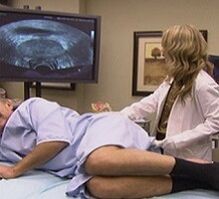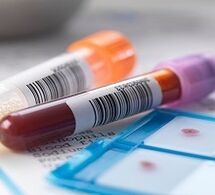How to determine prostatitis?This question is often asked to doctors.According to doctors, it is possible to identify the inflammatory process in the prostate gland only with a comprehensive examination.
An oral examination and a physical examination is performed to make a diagnosis.In addition, the doctor prescribes the patient's instrumental and laboratory tests.Based on the data obtained, the final diagnosis is made and the treatment tactics are selected.
Prostatitis can be eliminated drugs or surgically.Priority is always drug therapy.Surgical interventions are prescribed only if abscesses, supply or other complications of the disease develop.
What symptoms are inherent in prostatitis?
Prostatitis is a disease in which prostate iron is inflamed.In this case, the body may increase in size and swell.As a result of the development of inflammatory processes, disy disorders occur, semen quality develop and sexual disorders develop.
How to identify prostatitis in men and distinguish it from other pathologies?Everything is quite simple because this disease has characteristic characteristics.But, unfortunately, the disease can flow asymptomatic for a long time, so it is often diagnosed in the short stages.
So, the following signs are inherent in prostatitis:
- Desuric disorders.The disease is able to manifest itself with frequent urination, periodic urination and even urinary retention.At night, the patient is tormented by false urination.After emptying the bladder, a feeling of incomplete emptying may occur.
- Pain.With prostatitis Chatting hurts.The severity of the symptom during urination and during sexual contact increases.The pain can be radiated in testicles, lower part and penis.
- Constipation.They are observed in the chronic form of stagnant prostatitis.
- Disruption of sexual function.In the patient, the potency and the decrease in libido occurs premature ejaculation.It happens that a person, on the contrary, is difficult to finish during sex.The severity of orgasm with prostatitis is reduced.
- The appearance of blood or mucus in the urine.At the same time, severe itching in the urethra can occur during urination.These symptoms are observed with a bacterial form of disease.
- Reducing the quantitative and quality sperm indicators.
- Feeling nausea, chills, fever, general weakness, smearing in the body.These characteristics are characteristic of acute bacterial prostatitis.
Important!When the above signs appear, you should contact a urologist immediately.
How is diagnostics performed?
Physical examination and oral study

Let's take a closer look at how to identify prostatitis in men.First, the patient should consult a urologist.The doctor necessarily studies the patient's history and reveals whether the man had chronic diseases of the genotian system earlier.
Initially, a physical examination of the prostate is performed.The doctor inserts a finger into the patient's anus and checks the iron iron.Distinguishing a healthy prostate from the patient is very simple.If the organ is inflamed, then, when palpated, the doctor notes that the pancreas is swollen and has a heterogeneous structure.In general, it is now possible to diagnose prostatitis.
An oral examination is conducted to get an accurate clinical picture.The urologist clarifies:
- What a lifestyle the patient leads.
- How long the symptoms of prostatitis occur.
- Were they earlier infectious/viral diseases.
- What is the concern about the patient's work.
- Whether the patient transfers operations during which interventions are performed in the pelvic organs.
Important!In addition, the doctor can do a physical examination of the scrotum.The doctor draws attention to the size of the scrotum, its shape and consistency, as well as the mobility of the testes.
Instrumental diagnostics

In order to identify prostatitis, an instrumental diagnosis is required.The main diagnostic event is an ultrasound examination (ultrasound) of the prostate gland.
Ultrasound is performed in several ways.The organ can be examined through the anterior abdominal wall or using a specialized transmission sensor.When using the sensor, you can get a more accurate clinical picture.
In addition to ultrasound, they can be assigned:
- Urooflometry.
- MRI prostate gland.
- CT prostate.
Important!In the case of suspicion of benign/malignant tumors, the patient may be recommended a biopsy of the glandular organ.
Laboratory

With prostate inflammation, a number of tests should be undertaken.Laboratory diagnostics will understand exactly what provokes pathogenic processes in the glandular organ and whether prostatitis has a bacterial/infectious nature in this case.
First, patients are prescribed a PSA blood test - prostate -specific antigen.Analysis is necessary to understand if there is a predisposition to DHCS/Cancer.Usually the dog level should strive for zero.
In addition to PSA blood tests, recommended:
- Sperm.
- General blood test.
- Cytological, general and bacteriological analysis of urine.
- Taking a grease from the urethra.
- Study of pancreatic secretion.
- PCR studies.
Important!Based on the data obtained, the doctor may make the final diagnosis and, accordingly, choose the treatment tactics.
How to treat prostatitis?

With how to detect prostate inflammation, everything is extremely clear.Now let's look at the methods of treating prostatitis.So, as noted above, there are two ways to solve the problem - to undergo conservative or surgical treatment.
Surgical intervention is prescribed if prostatitis is accompanied by complications such as DGPZ, abscess, urinary retention, anuria, the appearance of stones in the glandular organ.Three main methods are used - prostatectomy, prostate resection and laser therapy.
Conservative treatment is more preferred and used in the bigger part of the cases.It provides:
- Creating a healthy lifestyle.The patient should understand that bad habits will slow down the recovery process.We will have to refuse cigarettes and alcohol once and for all.
- Balanced diet.In urological diseases, you should definitely stick to a diet.It is recommended that you remove fat dishes, semi-finished products, fast food, fried diet food.It also prohibits carbonated drinks as they provoke intestinal irritation, which is not useful for prostatitis.
- Visit to physiotherapy procedures.You can get rid of inflammatory processes through acupuncture, moxotherapy, electrophoresis, UVT, Thai massage.Prostate massage is also very useful.
- Avoiding hypothermia as it is the main cause of stagnant prostatitis.
- Taking certain prostatitis drugs.Antibiotics, bioregulatory peptides, alpha-1-adrenal ships, NSAIDs, antispasmodics and phytopreparations are prescribed.
- Have a full sex life (if possible).If a person refrains from sex, then he or she can again get prostatitis after undergoing therapy.Sexual activity with pancreatic inflammation will be useful.The main thing is to use barrier contraception.
Patients may also use folk treatment methods.But it must be remembered that they are nothing more than a complement.With inflammation of the pancreas, a decoction of flicker, honey, microclysms with chamomile is useful.

























